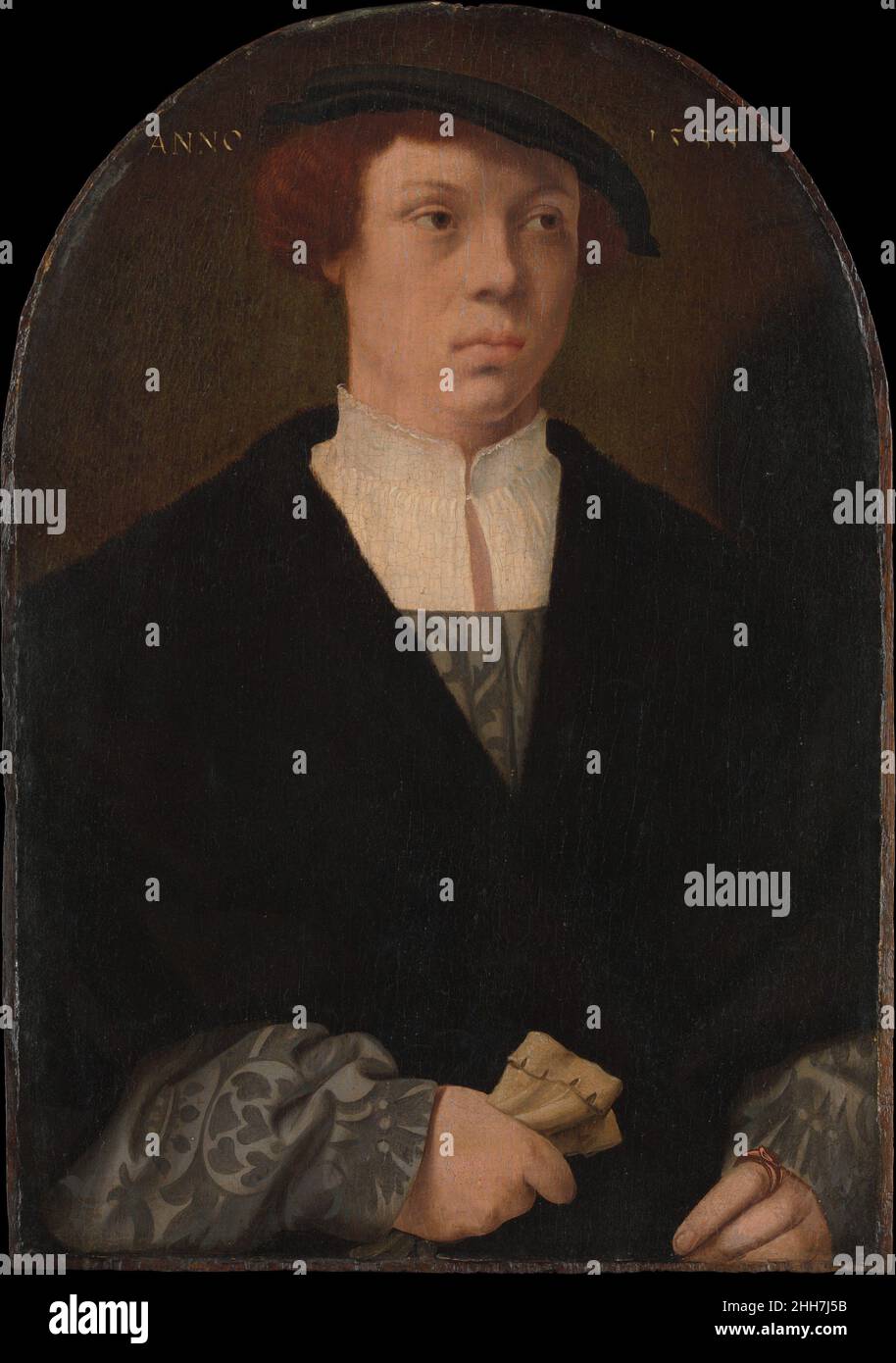Portrait of a Man 1533 Barthel Bruyn the Elder German The sitters wear costumes typical of the upper-class citizenry of Cologne, whose members were Bruyn's usual patrons. The woman's exposed hair, visible in braids at either side of her face, indicates that the couple are depicted as engaged, not married, as married women of Cologne wore their hair completely covered. It is likely that the portraits were commissioned to commemorate their engagement. In the context of this work, the carnation in the woman's hand is symbolic of love, betrothal, and marriage.. Portrait of a Man. Barthel Bruyn the

Image details
Contributor:
MET/BOT / Alamy Stock PhotoImage ID:
2HH7J5BFile size:
30.2 MB (1.4 MB Compressed download)Releases:
Model - no | Property - noDo I need a release?Dimensions:
2723 x 3872 px | 23.1 x 32.8 cm | 9.1 x 12.9 inches | 300dpiDate taken:
21 January 2022More information:
This image is a public domain image, which means either that copyright has expired in the image or the copyright holder has waived their copyright. Alamy charges you a fee for access to the high resolution copy of the image.
This image could have imperfections as it’s either historical or reportage.
Portrait of a Man 1533 Barthel Bruyn the Elder German The sitters wear costumes typical of the upper-class citizenry of Cologne, whose members were Bruyn's usual patrons. The woman's exposed hair, visible in braids at either side of her face, indicates that the couple are depicted as engaged, not married, as married women of Cologne wore their hair completely covered. It is likely that the portraits were commissioned to commemorate their engagement. In the context of this work, the carnation in the woman's hand is symbolic of love, betrothal, and marriage.. Portrait of a Man. Barthel Bruyn the Elder (German, 1493–1555). 1533. Oil on oak. Paintings